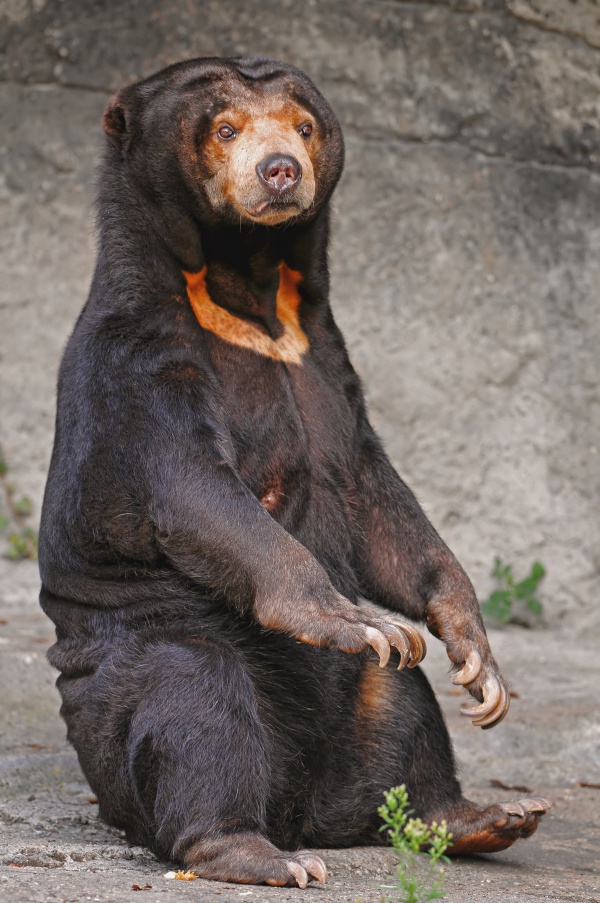Facts About Sun bear
Sun bears, the smallest bear species in the world, inhabit the tropical forests of Southeast Asia. Easily recognizable by their stocky build, large paws with curved claws, and distinctive chest patch that ranges from orange to cream, these bears are adept climbers often seen sleeping or sunbathing high in the trees.
Unlike many other bear species, sun bears are primarily diurnal. Their diet is diverse, including insects, fruits, and occasionally small vertebrates. Breeding occurs year-round, with females typically giving birth to one or two cubs. These cubs remain with their mother for approximately three years, learning essential survival skills.
Sun bears range from northeastern India across various parts of Southeast Asia. However, their population is under threat due to deforestation, illegal hunting, and human-wildlife conflicts. As a consequence, the International Union for Conservation of Nature (IUCN) has classified them as vulnerable. Sun bears possess several unique features, such as a short snout, inward-turned front feet, and strong forelimbs that make them excellent climbers.
Primarily arboreal, sun bears spend a significant amount of time in trees and are known for their intelligence. They are generally shy and tend to avoid humans unless threatened. Their diet is quite varied, comprising insects, honey, and fruits. Female sun bears are polyoestrous, meaning they can breed multiple times a year, typically giving birth to one or two cubs that remain dependent on their mother for several years.
The greatest threats to sun bear populations are habitat loss, hunting, and the wildlife trade. To address these threats, various conservation initiatives are underway. These include legal protections in most of their range countries, captive breeding programs, and public awareness campaigns. Organizations such as the Bornean Sun Bear Conservation Centre are dedicated to the welfare and conservation of these bears. Despite these efforts, sun bears continue to face numerous challenges in their natural habitat, making ongoing conservation efforts crucial to their survival.

 Timor Leste
Timor Leste